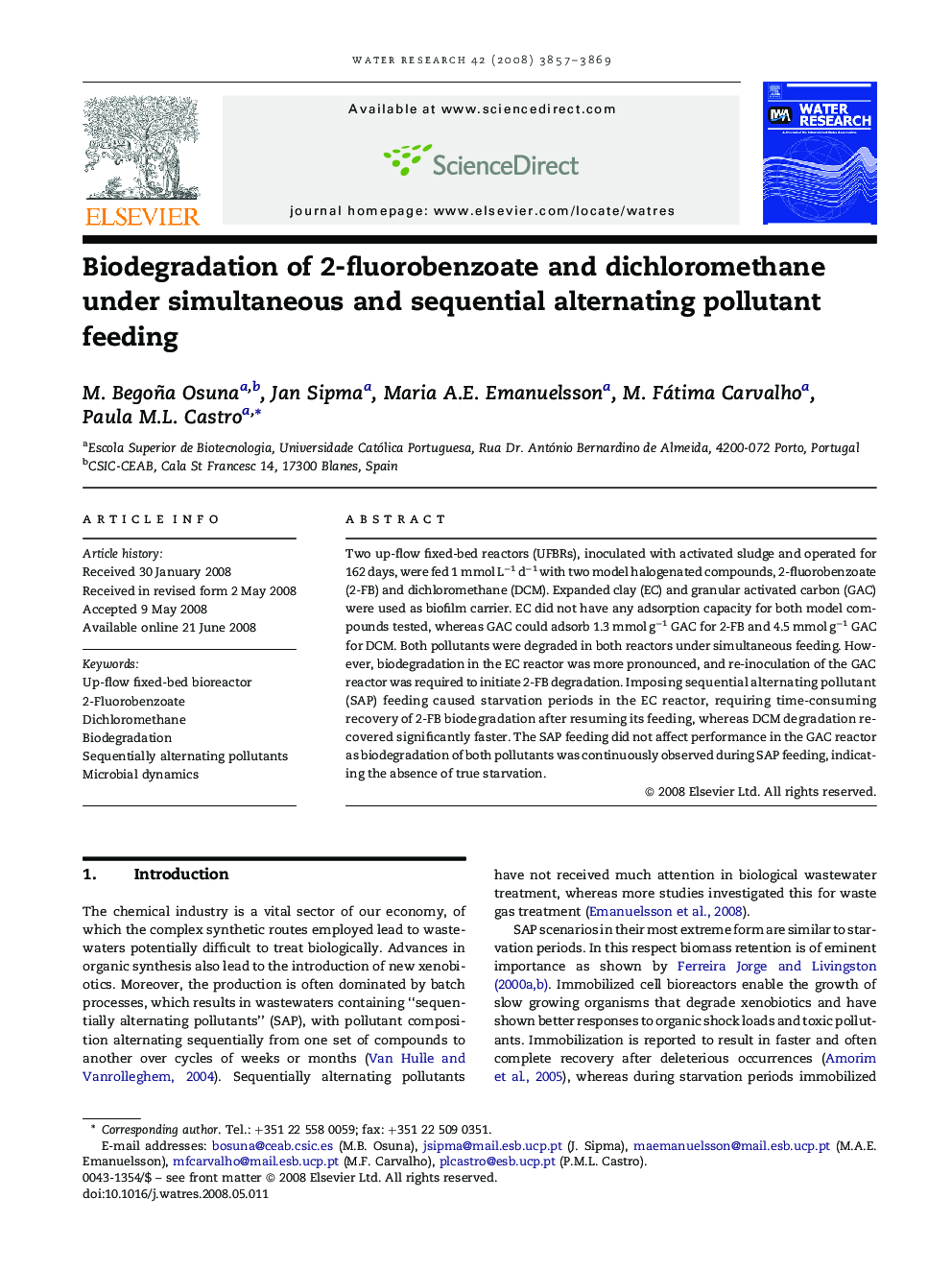| Article ID | Journal | Published Year | Pages | File Type |
|---|---|---|---|---|
| 4485978 | Water Research | 2008 | 13 Pages |
Two up-flow fixed-bed reactors (UFBRs), inoculated with activated sludge and operated for 162 days, were fed 1 mmol L−1 d−1 with two model halogenated compounds, 2-fluorobenzoate (2-FB) and dichloromethane (DCM). Expanded clay (EC) and granular activated carbon (GAC) were used as biofilm carrier. EC did not have any adsorption capacity for both model compounds tested, whereas GAC could adsorb 1.3 mmol g−1 GAC for 2-FB and 4.5 mmol g−1 GAC for DCM. Both pollutants were degraded in both reactors under simultaneous feeding. However, biodegradation in the EC reactor was more pronounced, and re-inoculation of the GAC reactor was required to initiate 2-FB degradation. Imposing sequential alternating pollutant (SAP) feeding caused starvation periods in the EC reactor, requiring time-consuming recovery of 2-FB biodegradation after resuming its feeding, whereas DCM degradation recovered significantly faster. The SAP feeding did not affect performance in the GAC reactor as biodegradation of both pollutants was continuously observed during SAP feeding, indicating the absence of true starvation.
